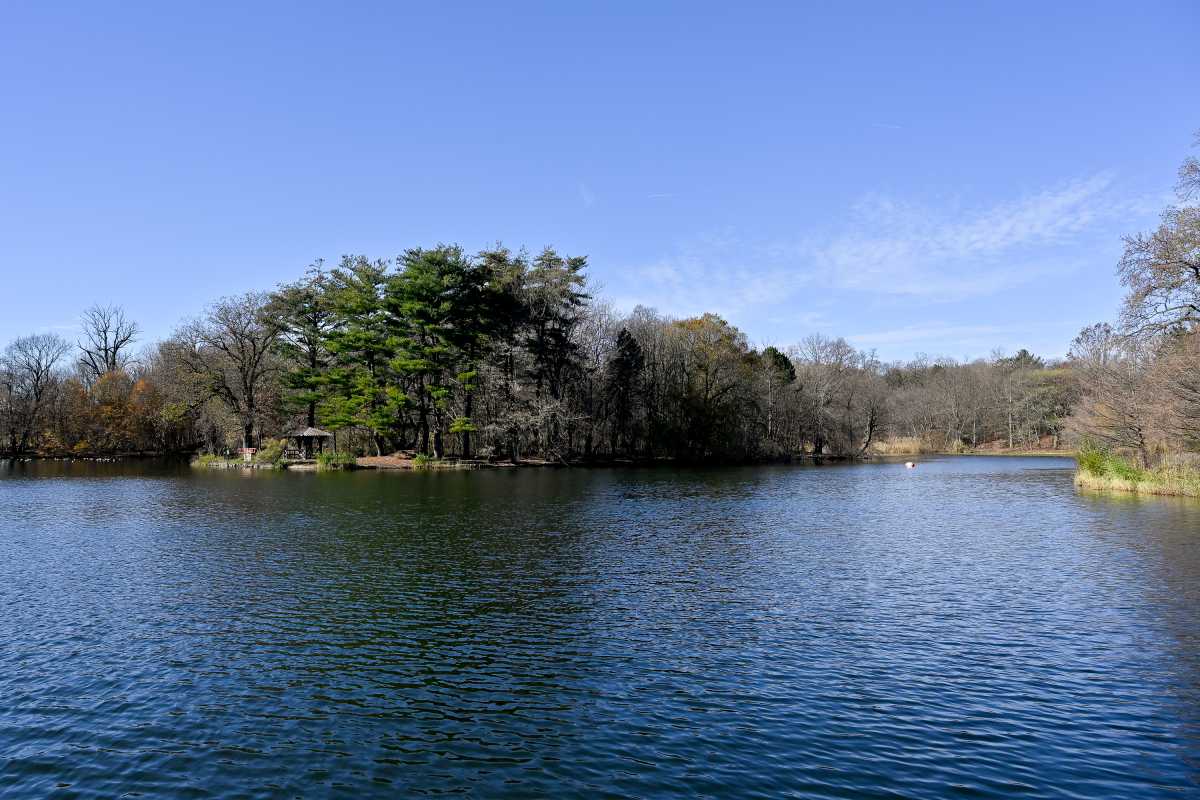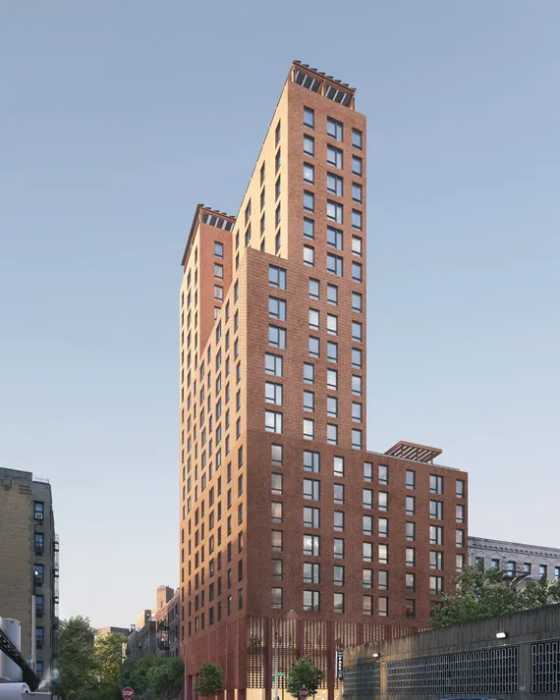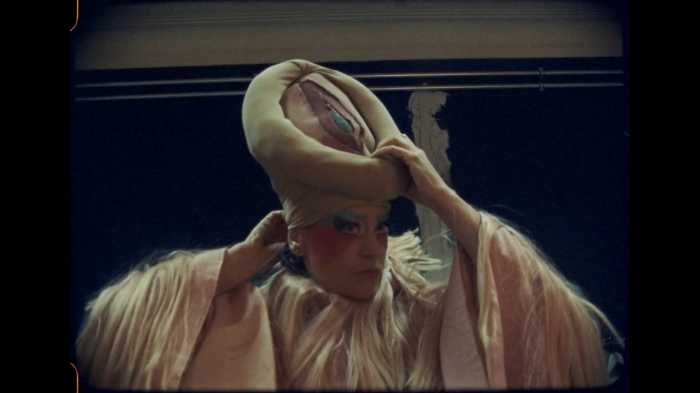By Albert Amateau
The Department of City Planning and Friends of the High Line last week selected seven teams of architects, engineers and planners to compete for the creation of a master plan to transform the derelict High Line into a 1.5-mile elevated park between the Gansevoort Market and the Javits Convention Center.
The seven teams were selected from among 52 that responded to the city’s request in March for qualifications to convert the 70-year-old railroad viaduct, which carried its last load of freight more than 20 years ago, into a park.
The teams will submit detailed proposals for the project to a jury of experts, half of them chosen from city agencies and half named by Friends of the High Line, the community group that started the movement to save the High Line. By the end of June, the jury will narrow the field to three finalists who will each develop illustrated design concepts for the elevated park. In September 2004, the jury will make its final selection of the team to lead the planning for the project, according to Robert Hammond, a founder of the Friends.
“Starting this fall, the team we select will work with the community and other stakeholders in the project to develop a master plan that will make the most of the amazing opportunity presented by the High Line,” said Hammond, adding that construction could begin early in 2006.
Mayor Bloomberg has supported the preservation of the High Line since he took office in 2002. The conversion of the viaduct into a park is now a key element in the city’s plan to redevelop West Chelsea west of 10th Ave., an area home to a thriving new art gallery scene.
Beyond West Chelsea, the Jets are proposing to tear down a segment of the north end of the High Line between 30th and 33rd Sts. and reconstruct it as part of the proposed stadium between 11th and 12th Aves. The Jets propose to rebuild the High Line segment, with a public market beneath it, around the stadium as part of the city-state-sponsored Hudson Yards redevelopment plan.
Hammond would not express an opinion for or against the controversial stadium plan, but he said the Friends were pleased that the Jets wanted the High Line to be preserved.
City Planning Commissioner Amanda Burden hailed the selection of teams for the High Line. “We’re thrilled that teams of this caliber will be considered to transform the High Line into one of the most exciting public spaces in the city of New York,” said Burden, calling the High Line “the backbone of … the Bloomberg administration’s redevelopment plan for Manhattan’s West Side … West Chelsea and the Hudson Yards to the north.”
The seven teams vying to design the High Line’s renovation master plan are:
• Field Operations with James Corner and Diller & Scofidio & Renfro. Field Operations is currently converting the Fresh Kills landfill into a park; James Corner is a professor of landscape architecture at Princeton, and the Diller-Scofidio-Renfro firm is working on a redesign of Lincoln Center.
• Zaha Hadid Architects with Thomas Balsley Associates. Hadid is a Pritkzer Prize for Architecture winner with an international practice. She has lectured at Harvard and Yale Schools of Architecture. Balsley is the landscape architect of Chelsea Waterside Park.
• Steven Holl Architects, a New York firm that has designed projects at Massachusetts Institute of Technology in Cambridge, Mass., and the Nelson Atkins Museum of Art in Kansas City.
• Latz & Partner with The Saratoga Associates. Latz is a German firm that specializes in transforming obsolete industrial land in urban areas into parks. The Saratoga Associates is a landscape architecture firm based in Albany.
• Rogers Marvel Architects and Gustafson, Guthrie, Nichol. Marvel designed the Studio Museum of Harlem and the firm’s work includes projects at the University of Georgia and Pratt Institute in Brooklyn. The Gustafson firm, based in Seattle, has designed waterfront parks in the Pacific Northwest.
• OpenMeshWork.org, a team of three firms whose partners have designed projects for the Dia Foundation for the Arts in Beacon, N.Y., and a waterfront park in Amsterdam, N.Y. Team members have also lectured on the origins of cities.
• TerraGRAM, a consortium of Michael Van Valkenburgh Associates and the D.I.R.T. Studio of Julie Bargmann and Beyer, Blinder, Belle Architects. Van Valkenburgh is a landscape architect working on the design of Hudson River Park, Bargmann is a landscape designer and Beyer, Blinder, Belle is active in historic restoration with projects including Grand Central Station.
Last year, Friends of the High Line attracted 720 freewheeling ideas from 36 countries in an open competition that did not require entries to be buildable or economically feasible.
“These seven teams have the experience and ability to make their ideas happen,” said Hammond. “We’re especially pleased that some of the people who entered the open competition last year are on some of the seven teams we selected last week,” he added.
On March 25, Representative Jerrold Nadler included $5 million for the High Line in the House version of a six-year transportation bill that must still go through a House and Senate conference process and be signed by the president.
Earlier this year, U.S. Senators Chuck Schumer and Hillary Clinton and Nadler secured $500,000 for the High Line project in the 2004 Transportation Bill. And in July of last year, City Council Speaker Gifford Miller announced a $15.75 million capital budget commitment for the High Line project. Last autumn, Assemblymember Richard Gottfried announced a $50,000 commitment of state funds for the High Line.
“Every 40 years or so New York sheds its skin with a burst of public and private investment in transportation,” said Schumer in a statement. “In the 1930s, we built the High Line to take the rails off the road when there were so many accidents on the Tenth Ave. tracks that it was known as ‘Death Avenue.’ Now we have a unique opportunity to breathe more life into Midtown West, Chelsea and the Meatpacking District by converting the High Line into a world-class park. Anyone who lives in these neighborhoods knows the one thing they lack is enough open space.”




































